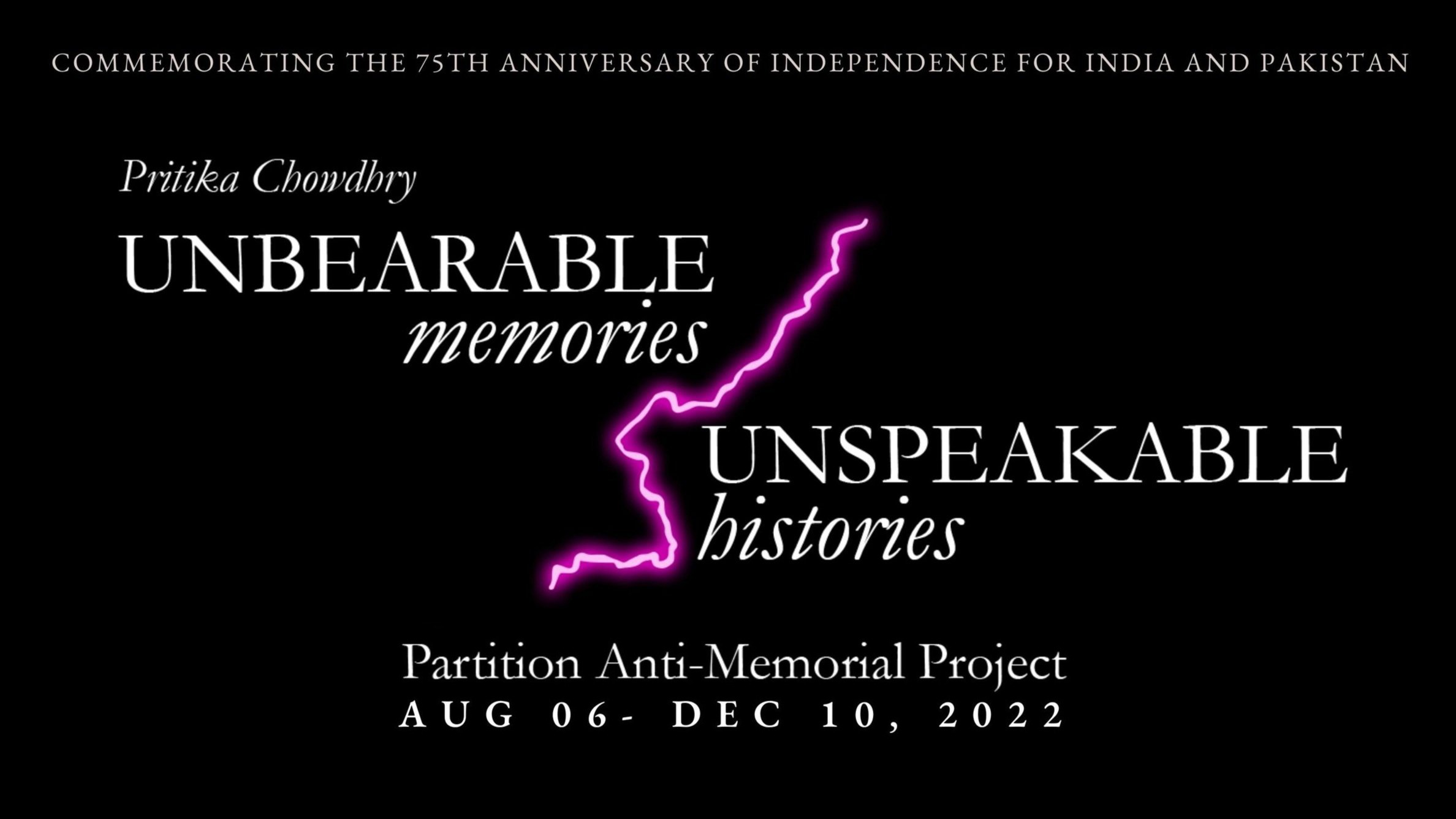A socio-political, feminist artist, Pritika Chowdhry, creates art installations that serve as anti-memorials to traumatic geopolitical events. Her newest project, Partition of India and the Radcliffe Line, depicts the brutal Partition of India in 1947 imposed by British decree.


An anti-memorial project, Pritika Chowdhry's Partition of India and the Radcliffe Line is a series of neon sculptures that depict the separation of India from Pakistan, now on exhibit at the South Asia Institute in Chicago. A single pink neon outline of the Radcliffe Line - a border arbitrarily designated by British lawyer Sir Cyril Radcliffe upon the establishment of the Indian Independence Act of 1947- is mounted against a dark background to symbolize the starkness and harshness of colonial indifference.
The neon sculptures that make up Chowdhry’s newest project bring attention to the explosive aftermath triggered by the partition of British India into India, East Pakistan, and West Pakistan. In 1971, East Pakistan became the independent state of Bangladesh.
Read more about the project at https://www.pritikachowdhry.com/cracking-india
All of Chowdhry's art is meant to convey socio-political commentary from the point of view of a feminist artist. Her goal is to bring a higher awareness of traumatic geopolitical events occurring in the 20th and 21st centuries through statement projects that evoke in viewers an understanding of the pain and suffering that traumatic geopolitical events like these once caused and continue to cause.
You'll note Chowdhry's decision to use a bright neon pink to represent the imposed India-Pakistan and India-Bangladesh borders. She selected this color for its stereotypical association with women, and to highlight the impact the Radcliffe Line had on Hindu, Muslim, Bengali, and Sikh women in 1947 and 1971. If you also felt this color choice might be a statement inspired by Chowdhry’s core feminist beliefs and values, you'd be absolutely correct. Read more about the Partition of India in this informative blog post at https://www.pritikachowdhry.com/post/partition-of-india-1947-an-overview-and-faq
The title of the project is inspired by Parsi feminist writer Bapsi Sidhwa’s novel “Cracking India,” a semi-autobiographical story narrated by a young girl witnessing the partition of India.
In a recent blog post written by Chowdhry titled “Partition of India and the dark history of the Radcliffe Line,” the artist details the impact the imposed border had on an otherwise jubilant moment in history. India was finally free from the oppressive British rule of 400 years. The subcontinent probably would have been celebrating but for the hands of fate that instead pitted religious groups and minority communities against each other.
There was a Hindu majority in British India, but there was also a large number of Indian Muslims and even Muslim majority districts, and significant Sikh, Bengali, Christina, and Parsi communities.
The formalized division that placed India in-between East and West Pakistan intensified distrust between religious groups, leading to intense communal riots, a massive refugee crisis as those living in minority enclaves fled across borders, and then several Indo-Pak wars. Read the blog post at https://www.pritikachowdhry.com/post/partition-of-india-radcliffe-line
Chowdhry says her grandparents survived the Partition of India in 1947 but lost several members of their extended family to the brutal communal riots that ensued. She has devoted her art practice to examining such traumatic geopolitical events in depth ever since.
With her anti-memorial project, Partition of India and the Radcliffe Line - "Cracking India: The Line that Still Bleeds," Chowdhry not only gives you a high-concept representation of the pain and brutality triggered by a foreign power but also highlights the powerlessness victims of geopolitical strife are forced to bear.
Are you curious to learn more? Go to https://www.pritikachowdhry.com/post/partition-of-india-first-war-of-independence-birth-of-pakistan for a quick overview of the Partition of India and Pakistan.
